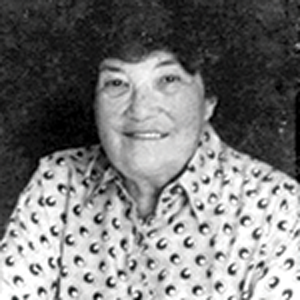 Hannah Burstein was born on January 8, 1922 in Tarnow, Poland. She had four brothers and one sister. Of her immediate family, only she, her sister, and one brother survived the Holocaust. When the Nazis conquered Poland in 1939, Hannah’s neighborhood was designated as a ghetto. Because she was a young woman and able to work, she was given ration cards for food. The children and the elderly in the ghetto were forced to starve in the non-working segment of the ghetto.
Hannah Burstein was born on January 8, 1922 in Tarnow, Poland. She had four brothers and one sister. Of her immediate family, only she, her sister, and one brother survived the Holocaust. When the Nazis conquered Poland in 1939, Hannah’s neighborhood was designated as a ghetto. Because she was a young woman and able to work, she was given ration cards for food. The children and the elderly in the ghetto were forced to starve in the non-working segment of the ghetto.
In 1941, the ghetto was liquidated, and those who could work were sent to labor camps. Hannah and her father were taken to Krakow-Plaszow labor camp (the same camp that supplied workers for Oskar Schindler’s factory). Hannah worked in a German uniform factory and while there was forced to witness hangings and mass slaughters of Jews by machine guns. She also watched as a truckload of children were taken away as a lullaby played over the loudspeakers. It was at this camp that her father died of starvation.
In 1943, Hannah was taken by train to Auschwitz. When the rail cars were opened, half of the prisoners were already dead. She was shocked and overwhelmed by the stench of burning bodies, as an orchestra played waltzes in front of the crematoriums. She passed through the selection by Dr. Josef Mengele. Her head was shaved and a serial number was tattooed on her arm, which remained visible the rest of her life. In 1944, Hannah was sent to a labor camp in Czechoslovakia, where, on Christmas Day, she and 300 women were forced to stand in the snow and watch as an SS officer fed his dog while they went hungry. Hannah was liberated by the Soviet Army in May 1945.
After returning to Poland, Hannah found that her home had been taken over by her Polish neighbors, and she was no longer welcome there. She soon met and married Paul Burstein, and they had a son. The El Paso Jewish community helped them move to El Paso, Texas, where they had two more children. Hannah died in 1995.